Best camera phone 2024: Smartphones with stargazing capabilities
Our guide to the best camera phones on the market today — including Apple, Google and Samsung.

We've come a long way since rudimentary snappers on the most expensive phones that let users send photos to friends via MMS.
Nowadays, the best camera phones have eclipsed many of the point-and-shoot digital cameras we would use for sharing family photos to a PC, offering what was once considered pro-level features like shutter control, telephoto lenses, and even astrophotography options.
Naturally, a keen photographer will still get more out of the best astrophotography cameras, but for everyone else, there's a lot to like about an everyday phone that can produce fantastic images and videos whenever and wherever you want.
Add to that an increase in processing power across iOS and Android, smart AI-powered techniques to make your photos look even better, and even more storage space as standard, and you've got a powerful recipe for some of the best camera phones around.
Whether you're an iPhone user, an Android die-hard, or are just looking for the next phone to take great photos with, you'll find a lot to like with just about any option in this guide.

I'm often found testing the latest and greatest phones across both iOS and Android, taking photos of my cat, the nearby river, or just about anything else. This time around, we've refreshed the list with the finest from Samsung, Google, Apple and more.
The Quick List
Check out our picks for the best camera phones, with every entry on this list fully deserving of its place either through the impressive detail it captures or surprising new spins on photography.
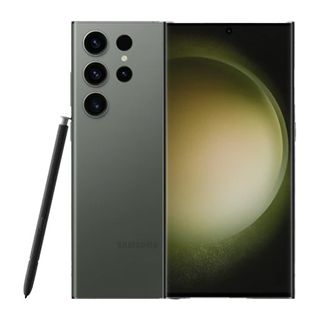
Despite being a year old, the Samsung Galaxy S23 Ultra is a phenomenal handset that also happens to be the pick of the bunch when it comes to mobile photography.

Apple's latest and greatest big phone is a photography powerhouse, and it's an excellent all-round device, too, thanks to a powerful new chip.

The Google Pixel 8 Pro is a fantastic phone that leverages AI for clever photography features like Best Take, all while tying in handily with Google Photos and Google Drive.
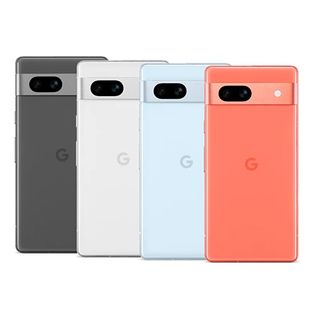
This more affordable Google phone packs the Google Tensor G2 chip as well as an excellent camera and stock Android experience.
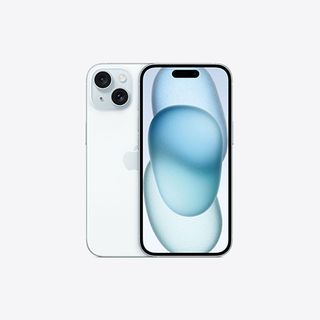
Apple's cheapest iPhone is hardly cheap at all, but the iPhone 15 marks a big step up from the 14, and includes much of the camera tech found in last year's Pro model.
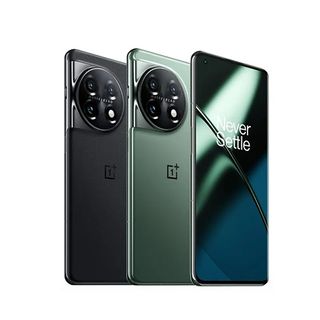
The OnePlus 11 5G is king of the portraits, leaning into Hasselblad-style photography and while it lacks much of a zoom, it offers phenomenal portrait and landscape images.
Load the next product ↴
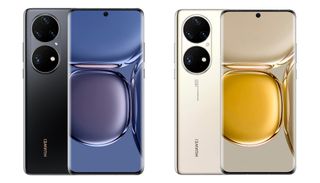
The OnePlus 11 5G is king of the portraits, leaning into Hasselblad-style photography and while it lacks much of a zoom, it offers phenomenal portrait and landscape images.
The best camera phones we recommend in 2024
Why you can trust Space.com
Best camera phone overall

1. Samsung Galaxy S23 Ultra
Our expert review:
Specifications
Reasons to buy
Reasons to avoid
✅ You're looking for versatility: The S23 Ultra offers amazing photography at just about any range.
✅ You want a fantastic phone too: The S23 Ultra is powerful, and you can get plenty done with its huge display and powerful chip.
❌ You're on a budget: The S23 Ultra doesn't come cheap, meaning you may struggle to justify it unless you're desperate for a flagship device.
🔎 Samsung Galaxy S23 Ultra: With a huge display, powerful chip, and plenty of camera tricks, the S23 Ultra is our pick of the best camera phones today. ★★★★★
Samsung's phones have always dazzled, but the Galaxy S23 Ultra may be the best one the company has ever manufactured.
Sporting a new, tougher chassis, a faster chip, and better battery life than its predecessors, this smartphone can do just about anything you need it to, and do it for much longer too.
When it comes to photography, it earns its spot as the 'king of the camera phones' with an unbelievable 200MP main camera, enhanced with 'Nightography' tech for photos and footage after dark and multiple telephoto sensors for smooth zoom that captures plenty of detail.
You can export to RAW with the Expert RAW mode, too (with huge file sizes to match), but it'll also pixel bin images down by 16 to 1 to make things a little more manageable.
Best iPhone camera phone
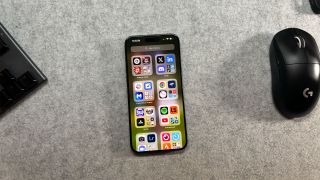
Specifications
Reasons to buy
Reasons to avoid
✅ You want fantastic performance: Apple's A17 Pro chip is a powerhouse, offering fantastic performance for just about anything.
✅ You're in the Apple ecosystem: Whether it's iPad, AirPods, or a Mac, you'll likely be well served with an iPhone, too.
✅ You want a USB-C iPhone: The Lightning Port is gone, long live the USB-C port.
❌ You want fast charging: There's wireless charging and somewhat faster charging, but there's no 'true' fast-charging on an iPhone just yet.
🔎 iPhone 15 Pro Max: Undeniably the best iPhone around, the iPhone 15 Pro Max is a powerful tool for just about anything - including photography. ★★★★★
In our iPhone 15 Pro Max review, we awarded it five stars, and we stand by it months later. Apple's latest (and largest) Pro phone is a hefty investment, but with its new Titanium design making it a little lighter, and its A17 Pro chip being a sizeable leap from the 14 Pro lineup, it's worth a look.
That A17 Pro handily beats the benchmarks of other phones (including the aforementioned S23 Ultra), making it a great choice for your choice of iOS apps and games.
Still, we're here for the photography, and the iPhone 15 Pro Max doesn't disappoint, with a 5x optical zoom that the smaller iPhone 15 Pro hasn't got, and a 48MP sensor that renders in 24MP resolution for some fantastic shots with plenty of color vibrancy.
Apple's also continued to gradually unfurl more options within the camera app, too, so things like digital lenses, photography styles and more are at your fingertips.
- Read our full iPhone 15 Pro Max review.
Best Google camera phone

3. Google Pixel 8 Pro
Our expert review:
Specifications
Reasons to buy
Reasons to avoid
✅ You want to try AI photography features: The main camera here is good, but also works with features like 'Best Take' to ensure excellent images.
✅ You already use Google Photos: Editing is done in the Google Photos app, and if you're already using it you'll feel right at home.
❌ You want to avoid AI tricks: The Pixel 8 Pro's main snapper isn't as good as others on this list without the added AI tweaks.
❌ You want true-to-life images: Pictures from the Pixel 8 Pro can offer exaggerated colors.
🔎 Google Pixel 8 Pro: The best Pixel yet, the Pixel 8 Pro is a perfect choice for anyone well-versed in Google's ecosystem. ★★★★
We're used to talking about the iPhone as part of an Apple ecosystem across devices and services, but we're close to the point where the Google Pixel lineup is similar.
With photos edited within Google's own suite of Photos options, deeper AI-powered features that can prep your photos for social media, and seven years of Android support guaranteed, there's never been a better time to buy a Google phone if you're already entrenched in things like Drive, Gmail, and more.
So, what about the cameras then? Pixels have always been solid performers, and while the upgrades here are across all camera lenses, it's not quite as good as the iPhone 15 Pro or Pro Max mentioned above. And yet, if you want to try out AI features like 'Best Take' which lets you pick your favorite individual faces from a group shot, or the improved Magic Eraser to remove extra people in the background, the Google Pixel 8 Pro is a great option.
Best budget camera phone
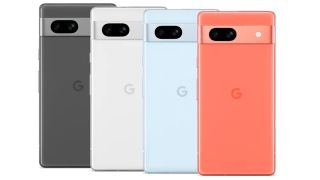
4. Google Pixel 7a
Our expert review:
Specifications
Reasons to buy
Reasons to avoid
✅ You want impressive performance: Despite its age, the Pixel 7a is still pretty rapid when it comes to all-round usage.
✅ You want a great camera on a budget: It's not as powerful as the Pixel 8 Pro, but for this price there are few better.
❌ You're making an investment: There are only just over two years left of Android support coming to the Pixel 7a.
❌ You want great battery life: The Pixel 7a is powerful, but it'll chomp through battery with almost impressive speed.
🔎 Google Pixel 7a: This budget-friendly handset offers a good camera at a great price, and stock Android is great, too, although we'd rather have more guaranteed OS support. ★★★½
Android is great, especially when it's stripped back to its bare essentials, and that's what you'll get with the Google Pixel 7a. It's a capable handset powered by the Google Tensor G2 chip, and it may be a little too powerful - sadly, the Pixel 7a will rip through battery life.
If you can deal with that, though, the camera here is a treat and a huge step up from the 6a that precedes it.
It's much more useful in low-light shots, and it now has a 64MP sensor - 4 times the 12MP from its predecessor.
Still, you'll only have two more years of Android support guaranteed, and while it's unlikely Google will just stop supporting the Pixel 7a, it's something to consider when making a purchase.
Best affordable iPhone
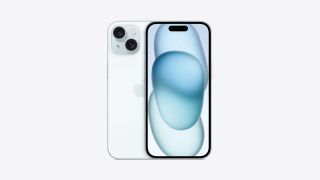
5. iPhone 15
Our expert review:
Specifications
Reasons to buy
Reasons to avoid
✅ You want a new iPhone: The iPhone 15 is a fantastic phone, albeit it's still not what you'd call cheap.
✅ You want a great camera: The iPhone 15 is a huge step up from the 14, particularly when it comes to the camera.
❌ You want a zoom lens: The zoom lens is still restricted to the Pro-level iPhone models for now.
🔎 iPhone 15: An excellent all-rounder, the iPhone 15 is the best base model iPhone we've ever seen. ★★★★½
The iPhone 14 was by no means a poor phone, but the gulf between it and the 14 Pro models was clearer than ever. That's something that's harder to say about the iPhone 15 and its Pro siblings, with big upgrades to the base model that make it close to the 14 Pro despite costing considerably less.
The Dynamic Island is a new UI quirk that melds hardware and software ingenuity to offer a sort of 'screen within a screen', and it's packing the lightning-fast A16 Bionic chip, too.
For the camera, though, the big change is a bump to a 48MP sensor to accompany the 12MP Ultrawide. There's still no zoom lens (although the 48MP wide camera can go up to 2x), but the increase in quality is hefty from not only the iPhone 14 but, naturally, models that came before that you may be upgrading from.
Best stylish camera phone
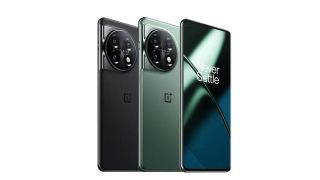
6. OnePlus 11 5G
Our expert review:
Specifications
Reasons to buy
Reasons to avoid
✅ You want to take unique photos: The OnePlus 11 5G leans on Hasselblad-style cameras for stylish shots.
✅ You want 5G: The OnePlus 11 5G offers superfast 5G at a lower price than many of the alternatives on this list that.
❌ You want a broader range of photography options: Many on this list are all-rounders, but the OnePlus 11 5G will take a very specific style of photo some may not be into.
🔎 OnePlus 11 5G: A stylish phone with a lot of opinions on photography, the OnePlus 11 5G is an outsider in a sea of similar camera phones. ★★★★
The OnePlus 11 5G has a unique approach to photography. It's not that the base process is any different from opening the camera app and pressing the button, but it's more the philosophy.
That's because it uses a Hasselblad camera system that's closer to something employed by a professional photographer. That means the sky is the limit for fantastic portrait shots or even some spectacular landscapes, but you'll find things a little less malleable for basic shots.
Still, if you've got the know-how or the patience, you can expect some lovely shots. Aside from that, it's a very capable Android phone, too, with 5G connectivity and a buttery smooth UI.
Best camera phone for zooming

7. Huawei P50 Pro
Our expert review:
Specifications
Reasons to buy
Reasons to avoid
✅ You want a premium device: The Huawei P50 Pro really feels great to hold and is made form premium materials.
✅ You want a great zoom feature: You can get real close on your subjects with a 3.5x optical zoom, and an up-to 100x maximum zoom.
❌ No support for Google: We wouldn't recommend Huawei brands if you rely on Google services.
❌ Lack of 5G: If you're hoping to take advantage of next-gen data transfer speeds, you should look elsewhere.
🔎 Huawei P50 Pro: This is a premium phone that doubles as a great pocket camera, but falls short in terms of services like 5G compared with the rest of the market. ★★★½
Regarding optical zoom, the Huawei P50 Pro is hard to beat. Its 64MP periscope telephoto lens has a 100x zoom range — although admittedly, going by the sample images on their website, you start to lose image quality from 50x and over.
They also claim to have professional-grade color accuracy, making landscape and portrait images come to life with natural tones and colors. This camera reportedly performs brilliantly in low light, too, giving a wide dynamic range and low noise levels in all conditions — good news for astrophotographers.
Unfortunately, though, there's an elephant in the room. Huawei smartphones now don't support Google Play apps and services, which may make them less desirable to many consumers.
How to choose the best camera phone for you:
Consider your budget: Phones, regardless of camera, can get expensive. Depending on your budget, you may be able to pick up an expensive model, but there's no shame in aiming lower and securing a great phone like the Pixel 7a and saving a bundle, too.
Pick a platform: The battle between iOS and Android will rage until the end of time, but only you can decide which side you fall on. Apple's ecosystem features will likely make an iPhone tempting for many, but Android users will no doubt prefer to stay in the same highly-customizable OS. The choice is yours, and there are benefits and drawbacks for each.
Don't buy it for the camera alone: We love the camera phones on this list, but they're also excellent phones, too. There's no point buying one of these camera phones if you're not interested in having it as a phone, too, complete with apps and almost game console-like graphics.
How we tested

With complete editorial independence, Space.com are here to ensure you get the best buying advice on camera phones, whether you should purchase a device or not, making our buying guides and reviews reliable and transparent.
We test camera phones based on a variety of factors, using them as our 'daily driver' for a number of days and noting the positives and negatives of doing so.
We test games on them, run complex apps and benchmarks, and use them as our primary social media platform. We also test the cameras, snapping pictures including portraits, landscapes, macro (where applicable) and testing video calls.
We also factor in the cost of each phone, judging each against similarly priced models to see which offers more features or simply feels better to use.
We rate each model out of five stars, and the picks on this list range from cheaper options to more expensive ones, to surprise additions.
Join our Space Forums to keep talking space on the latest missions, night sky and more! And if you have a news tip, correction or comment, let us know at: community@space.com.
Get the Space.com Newsletter
Breaking space news, the latest updates on rocket launches, skywatching events and more!

Jamie is an experienced science, technology and travel journalist and stargazer who writes about exploring the night sky, solar and lunar eclipses, moon-gazing, astro-travel, astronomy and space exploration. He is the editor of WhenIsTheNextEclipse.com and author of A Stargazing Program For Beginners, and is a senior contributor at Forbes. His special skill is turning tech-babble into plain English.
- Kimberley LaneContributing writer
